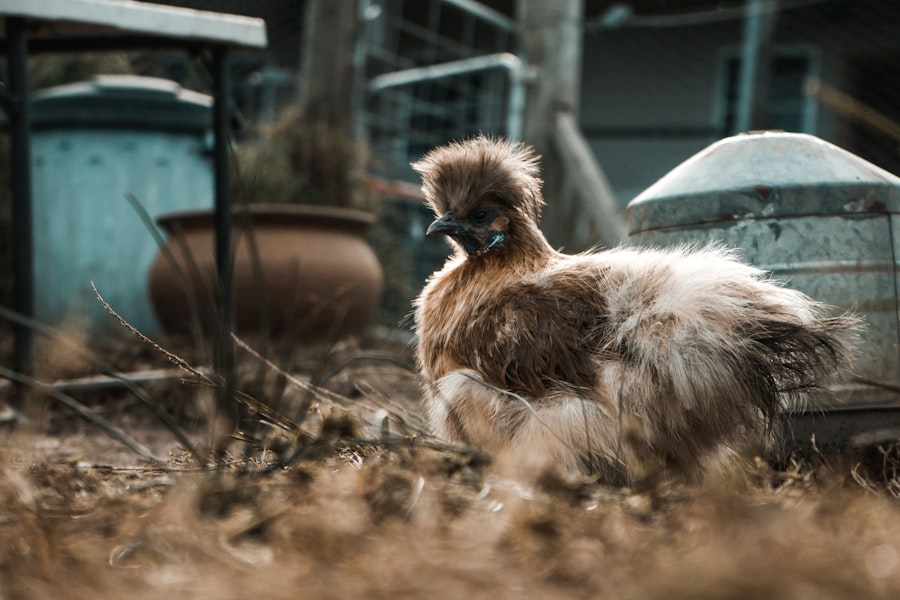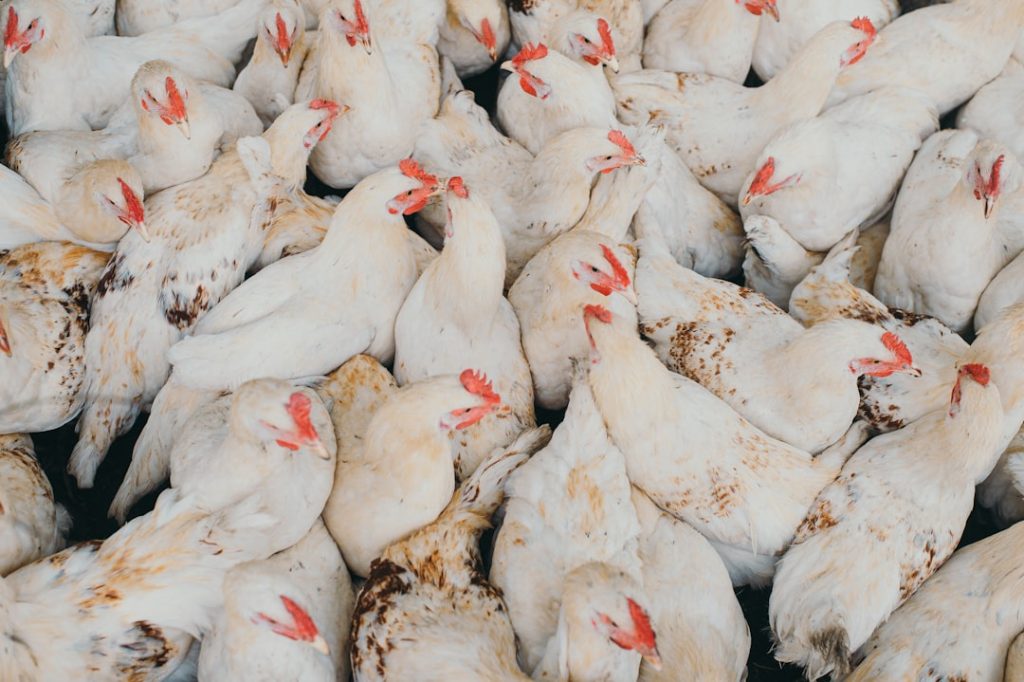Mothballs are small spheres composed of chemical pesticides and deodorants, primarily made from naphthalene or paradichlorobenzene. Their primary purpose is to protect clothing from moth larvae, but they are also utilized as repellents for various pests, including rodents, snakes, and insects. Some individuals have attempted to use mothballs to deter chickens from specific areas.
Chickens are domesticated birds commonly raised for their eggs and meat. Their curious nature can sometimes lead them to wander into undesired areas, prompting some people to consider using mothballs as a repellent. The strong, pungent odor of mothballs is designed to deter pests and insects.
Some believe this odor may also be effective in repelling chickens. However, the use of mothballs for this purpose is controversial due to potential risks and dangers associated with their use around poultry. This article will examine the effectiveness of mothballs in repelling chickens, the potential risks and dangers of their use around poultry, alternative methods for chicken deterrence, the importance of proper chicken coop management, and the behavior of chickens in relation to various odors.
By exploring these topics, readers can make informed decisions regarding the use of mothballs as a chicken repellent.
Table of Contents
- 1 The Effectiveness of Mothballs in Repelling Chickens
- 2 Potential Risks and Dangers of Using Mothballs Around Chickens
- 3 Alternative Methods for Keeping Chickens Away
- 4 The Importance of Proper Chicken Coop Management
- 5 Understanding the Behavior of Chickens and Their Attraction to Certain Smells
- 6 Making Informed Decisions About Using Mothballs for Chicken Repellent
- 7 FAQs
Key Takeaways
- Mothballs are commonly used as a chicken repellent due to their strong odor and potential to deter pests.
- While some people claim that mothballs are effective in repelling chickens, there is limited scientific evidence to support this claim.
- Using mothballs around chickens can pose serious health risks, including poisoning and respiratory issues.
- Alternative methods for keeping chickens away include using physical barriers, natural repellents, and proper coop management.
- Proper chicken coop management, including regular cleaning and maintenance, is essential for keeping chickens healthy and preventing them from being attracted to certain smells.
The Effectiveness of Mothballs in Repelling Chickens
The Debate Surrounding Mothballs as a Chicken Repellent
While some individuals claim to have successfully used mothballs to keep chickens away, others have reported that chickens can become accustomed to the smell over time and continue to venture into the area despite the presence of mothballs. Furthermore, there is limited scientific evidence to support the effectiveness of mothballs as a chicken repellent. Mothballs may be effective in deterring certain pests and insects, but their effectiveness in repelling chickens is not well-documented.
Risks and Dangers Associated with Using Mothballs
It is essential for individuals considering the use of mothballs as a chicken repellent to carefully weigh the potential risks and dangers associated with their use. Alternative methods for keeping chickens away from specific areas should also be explored. On the other hand, some individuals have reported success with using mothballs to keep chickens away from specific areas, claiming that the strong odor effectively deters chickens from entering the area.
Variability in Effectiveness
It is crucial to note that individual experiences may vary, and the effectiveness of mothballs in repelling chickens may depend on various factors such as the number of chickens, the specific area being targeted, and the persistence of the chickens.
Potential Risks and Dangers of Using Mothballs Around Chickens

While some people may consider using mothballs as a means of keeping chickens away from specific areas, it is important to be aware of the potential risks and dangers associated with their use around chickens. Mothballs contain toxic chemicals such as naphthalene or paradichlorobenzene, which can be harmful to both humans and animals if ingested or inhaled. When used in enclosed spaces or in close proximity to chickens, there is a risk that the toxic fumes emitted by mothballs could pose a health hazard to the chickens.
In addition to the potential health risks posed by the toxic chemicals in mothballs, there is also a risk of accidental ingestion by chickens. Chickens are known to peck at objects in their environment, and if they were to ingest mothballs, it could lead to poisoning and potentially fatal consequences. Furthermore, the use of mothballs around chickens could also result in contamination of the surrounding environment, including soil and water sources, which could have negative implications for both the chickens and other wildlife in the area.
It is important for individuals considering the use of mothballs as a chicken repellent to carefully weigh the potential risks and dangers associated with their use. The health and well-being of the chickens should be a top priority, and it is essential to consider alternative methods for keeping chickens away that do not pose a risk to their health and safety.
Alternative Methods for Keeping Chickens Away
Given the potential risks and dangers associated with using mothballs around chickens, it is important to consider alternative methods for keeping chickens away from specific areas. There are several non-toxic and humane methods that can be used to deter chickens without posing a risk to their health and well-being. One effective method is the use of physical barriers such as fences or netting to prevent chickens from accessing certain areas.
By creating a physical barrier, individuals can effectively keep chickens away without relying on potentially harmful chemicals. Another alternative method for keeping chickens away is the use of natural deterrents such as citrus peels, garlic, or chili peppers. These natural substances emit strong odors that are unpleasant to chickens and can effectively deter them from entering specific areas.
Additionally, the use of motion-activated deterrents such as sprinklers or noise-emitting devices can startle chickens and discourage them from venturing into unwanted areas. It is important for individuals to explore alternative methods for keeping chickens away that do not pose a risk to their health and well-being. By utilizing non-toxic and humane deterrents, individuals can effectively manage unwanted chicken activity without resorting to potentially harmful chemicals such as mothballs.
The Importance of Proper Chicken Coop Management
Proper chicken coop management is essential for maintaining a healthy and safe environment for chickens while also minimizing unwanted chicken activity in specific areas. By ensuring that chicken coops are secure and well-maintained, individuals can prevent chickens from wandering into areas where they are not supposed to be. This includes regularly inspecting fences and enclosures for any signs of damage or wear, as well as ensuring that coop doors are securely closed at night to prevent chickens from escaping.
In addition to maintaining secure coops, it is important to provide chickens with an enriching environment that meets their physical and behavioral needs. This includes providing adequate space for exercise and foraging, as well as access to fresh water and nutritious feed. By meeting the needs of the chickens within their coop environment, individuals can reduce the likelihood of them venturing into unwanted areas in search of resources.
Proper chicken coop management also involves regular cleaning and maintenance to ensure a clean and hygienic environment for the chickens. This includes removing waste and soiled bedding on a regular basis, as well as regularly disinfecting coop surfaces to prevent the spread of disease. By maintaining a clean and healthy coop environment, individuals can promote the overall well-being of their chickens while also minimizing unwanted chicken activity in specific areas.
Understanding the Behavior of Chickens and Their Attraction to Certain Smells

Understanding Chicken Behavior
This natural behavior can sometimes lead chickens to venture into unwanted areas where they may cause damage or nuisance. Understanding the behavior of chickens and their attraction to certain smells is essential for effectively managing unwanted chicken activity. By identifying the specific factors that may be attracting chickens to certain areas, individuals can take proactive measures to deter them without relying on potentially harmful chemicals such as mothballs.
Effective Management Strategies
This may involve removing potential food sources or shelter from the area, as well as implementing non-toxic deterrents such as natural odors or physical barriers. It is important for individuals to consider the natural behavior of chickens when addressing unwanted chicken activity in specific areas.
Proactive Measures for a Healthy Environment
By understanding their attraction to certain smells and environmental factors, individuals can take proactive measures to effectively manage unwanted chicken behavior without posing a risk to their health and well-being.
Making Informed Decisions About Using Mothballs for Chicken Repellent
In conclusion, while some individuals may consider using mothballs as a means of repelling chickens from specific areas, it is important to carefully consider the potential risks and dangers associated with their use. Mothballs contain toxic chemicals that can pose a health hazard to both humans and animals if ingested or inhaled. Additionally, there is limited scientific evidence to support their effectiveness in repelling chickens.
It is essential for individuals to explore alternative methods for keeping chickens away that do not pose a risk to their health and well-being. This includes utilizing non-toxic and humane deterrents such as physical barriers, natural odors, or motion-activated devices. Proper chicken coop management is also crucial for maintaining a healthy environment for chickens while minimizing unwanted chicken activity in specific areas.
By understanding the behavior of chickens and their attraction to certain smells, individuals can take proactive measures to effectively manage unwanted chicken behavior without relying on potentially harmful chemicals such as mothballs. Making informed decisions about using mothballs for chicken repellent involves carefully weighing the potential risks and dangers while considering alternative methods that prioritize the health and well-being of the chickens.
If you’re interested in keeping chickens, you may also want to learn about what vegetables quails eat. Check out this informative article on Poultry Wizard to discover the best vegetables to feed your quails for optimal health and nutrition.
FAQs
What are mothballs?
Mothballs are small balls of chemical pesticide used to protect clothing from damage caused by moths and other pests. They are typically made of either naphthalene or paradichlorobenzene.
Do mothballs keep chickens away?
There is no scientific evidence to support the claim that mothballs keep chickens away. In fact, using mothballs in areas where chickens roam can be harmful to the birds as they can ingest the toxic chemicals.
Are mothballs safe for chickens?
No, mothballs are not safe for chickens. The chemicals in mothballs are toxic and can be harmful if ingested by chickens. It is important to keep mothballs away from areas where chickens have access.
What are some effective methods for keeping chickens away from certain areas?
There are several effective methods for keeping chickens away from certain areas, including using physical barriers such as fences or netting, using natural deterrents like citrus peels or garlic, and training the chickens to avoid specific areas through positive reinforcement.
Are there any natural alternatives to mothballs for keeping chickens away?
Yes, there are several natural alternatives to mothballs for keeping chickens away, including using strong-smelling herbs like lavender or mint, creating physical barriers with plants or rocks, and using motion-activated deterrents like sprinklers or noise makers.
Meet Walter, the feathered-friend fanatic of Florida! Nestled in the sunshine state, Walter struts through life with his feathered companions, clucking his way to happiness. With a coop that’s fancier than a five-star hotel, he’s the Don Juan of the chicken world. When he’s not teaching his hens to do the cha-cha, you’ll find him in a heated debate with his prized rooster, Sir Clucks-a-Lot. Walter’s poultry passion is no yolk; he’s the sunny-side-up guy you never knew you needed in your flock of friends!







